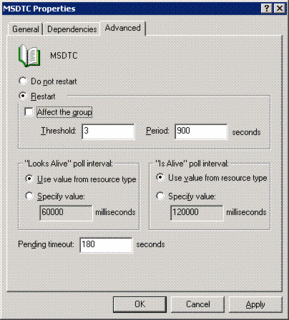Exchange clusters and the Microsoft Distributed Transaction Coordinator
This week there has been some discussions on one of the e-mail lists to which I describe about the proper placement of the MSDTC (Microsoft Distributed Transaction Coordinator) resource in an Exchange-only cluster. Over the past couple of years, I have seen recommendations that state that it should be in its own cluster resource group (with its own physical disk, IP address, and network name) versus putting the MSDTC resource in the Cluster group with the cluster quorum and the quorum drive. Even Microsoft's own guidance on this has been less than consistent.
First, a little background, while Exchange does not directly use the MSDTC in a cluster, it is required on a cluster during Exchange setup and service packs. Therefore, the MSDTC is really used less than 1% of the time in a cluster.
Thanks to this lively discussion, the Microsoft documentation (including the Exchange High Availability Guide and the Deployment Guide) as well as a few KB articles are going to be updated to reflect Microsoft's recommended Best Practices.
So, the best practice for the MSDTC is to put it in the default Cluster Group with the cluster name resource, cluster IP address, cluster quorum resource, and the cluster quorum drive. If you are concerned about a failure of the MSDTC causing a fail-over of the entire Cluster Group, on the Advanced property page of the MSDTC properties, clear the "Affect the Group" checkbox. I personally recommend this additional step.

Please note that this advice does not hold up in a cluster that supports SQL Server, as SQL Server makes more use of the MSDTC and thus it may be important that the MSDTC is in its own resource group and uses a dedicated disk drive.

0 Comments:
Post a Comment
<< Home